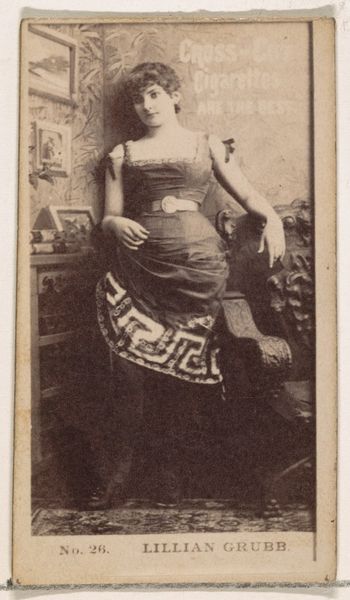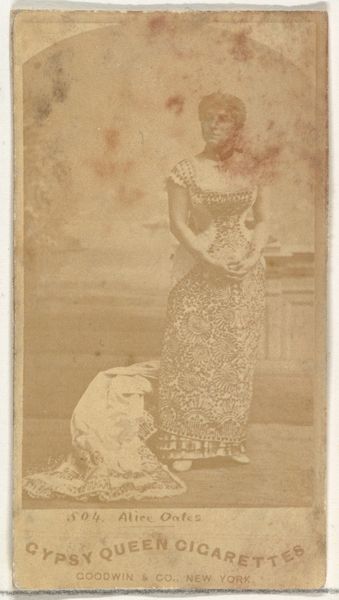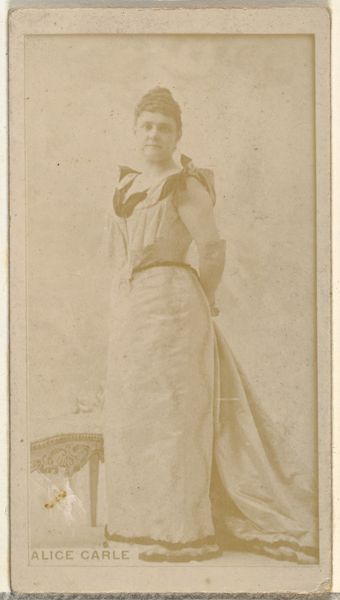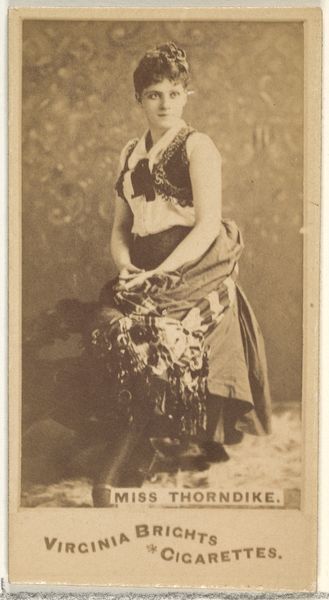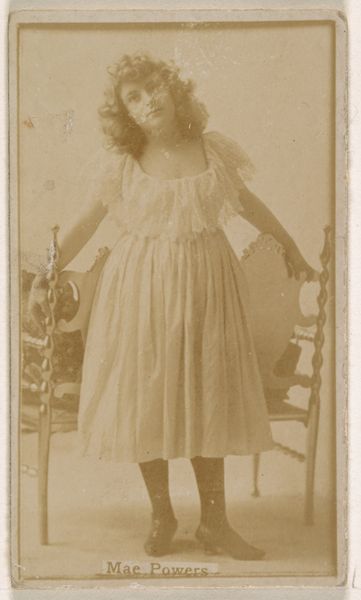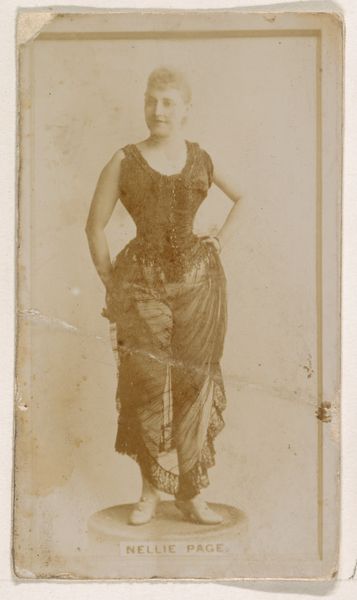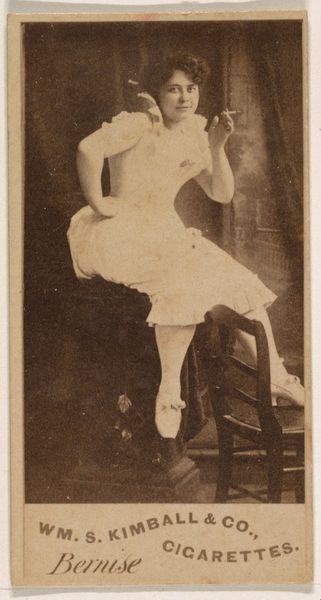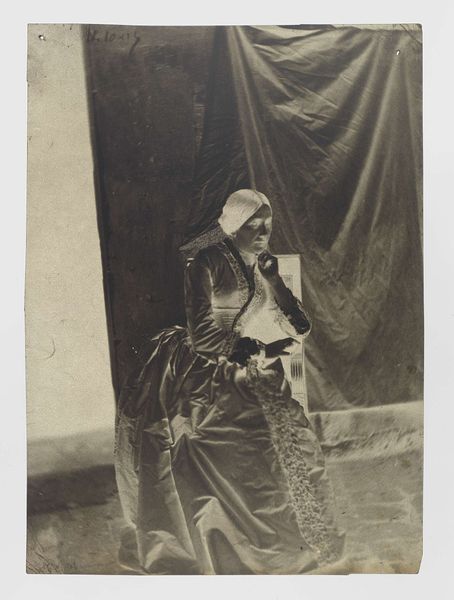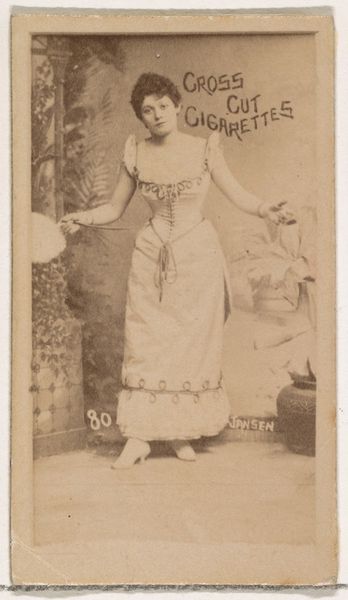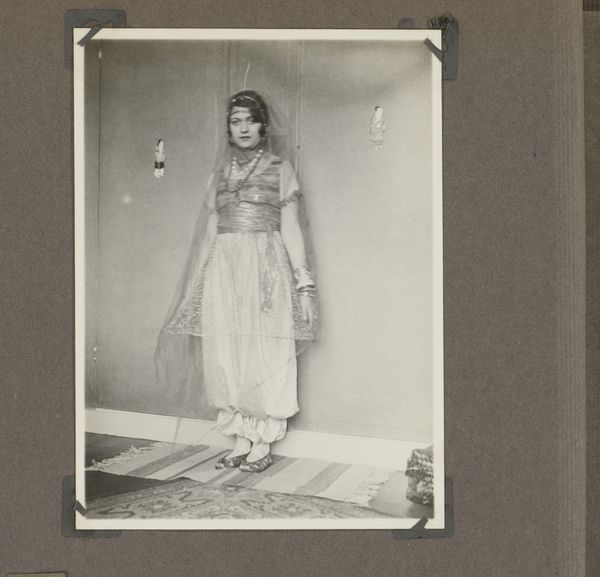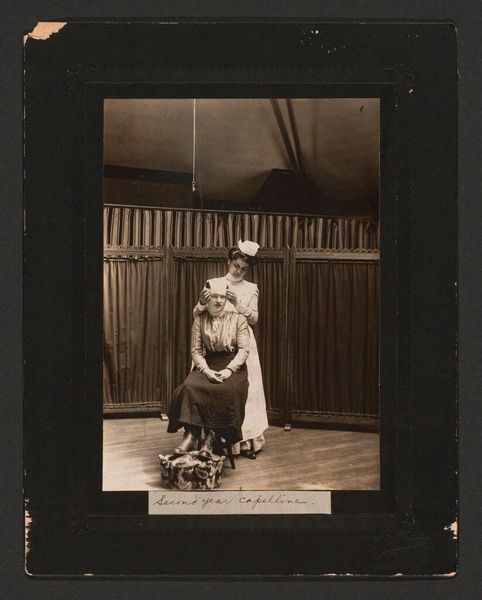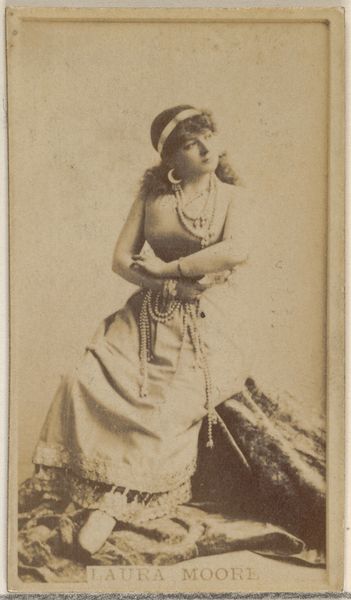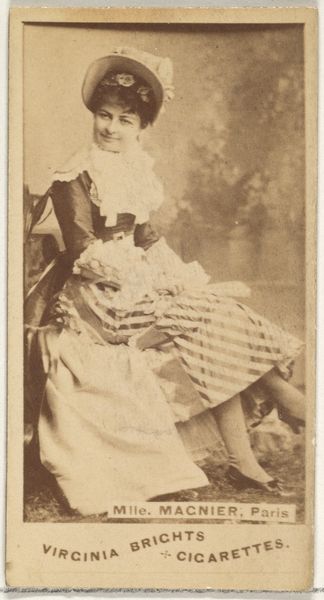
photography
#
portrait
#
african-art
#
archive photography
#
photography
#
historical photography
#
historical fashion
#
19th century
#
genre-painting
Dimensions: height 100 mm, width 78 mm
Copyright: Rijks Museum: Open Domain
Curator: The artwork we're viewing is a photograph titled "Standing Javanese Woman," dating from 1925 to 1927. Editor: The first thing that strikes me is the directness of her gaze and the rather rudimentary look of the photograph itself. The tonal range is quite narrow; it lends an air of starkness to the scene. Curator: Indeed. It's tempting to see it simply as ethnographic documentation, a record of Javanese dress and social life, considering the crowd in the background. However, we should consider that photography during that era was increasingly being utilized for colonial administration and knowledge production, with implications of power and control in such depiction. Editor: Yes, the context is crucial. The means by which this image was made—the photographer's equipment, darkroom practices—shapes our reading, doesn’t it? What materials would have been involved, who would have owned the image and controlled its distribution? It appears almost like a casual snapshot but one can sense the controlled gaze looking back. Curator: Precisely. The act of taking this photo, the very creation of this "archive photograph," plays into broader colonial dynamics. Consider the arrangement of figures, too: she is centrally positioned. What public story does the image tell? Editor: And who chose what she wore? That 'historical fashion,' as some might call it, tells of adornment and textile traditions while being subject to outside intervention, influencing local dress towards a 'modernized' presentation to foreign consumption and viewership. Curator: A very important point. It raises so many questions about cultural exchange, visual representation, and ultimately, the power embedded in the creation and distribution of images like this. I am left wondering about the impact of such photographic ventures on the identity of Javanese womanhood and how that narrative spread internationally. Editor: It pushes us to reflect not just on the aesthetic elements, but on the social impact of photography itself, doesn't it?
Comments
No comments
Be the first to comment and join the conversation on the ultimate creative platform.
